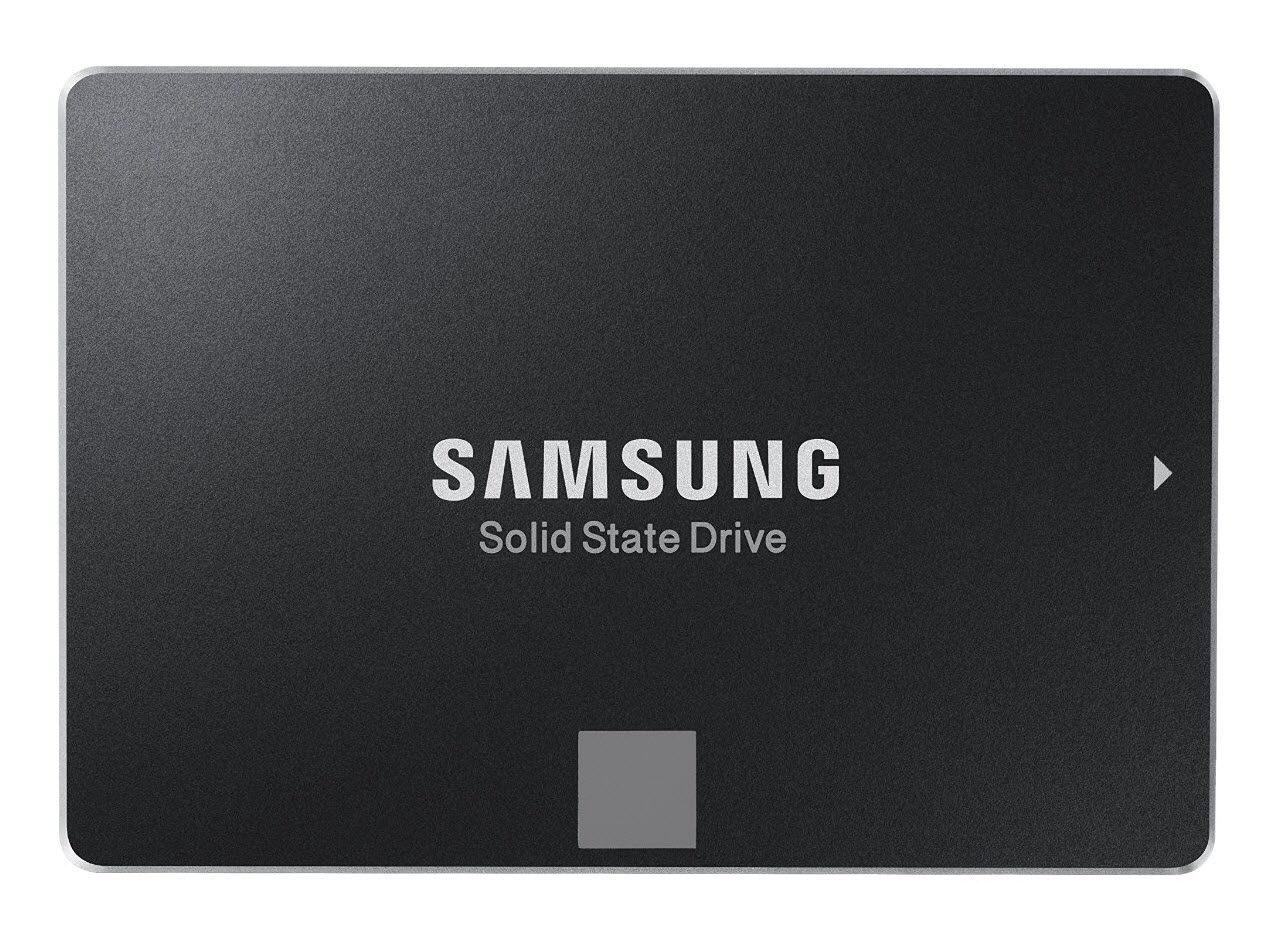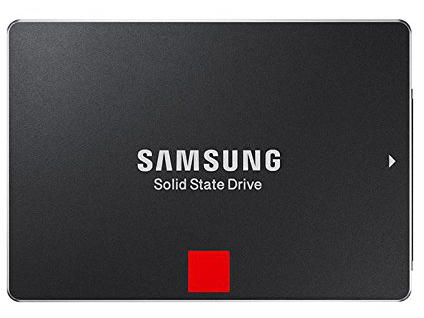Samsung 850 EVO 4TB SSD Review
Why you can trust Tom's Hardware
Four-Corner Performance Testing
Comparison Products
The 4TB 850 Evo doubles the capacity of the largest consumer SSDs currently shipping. There are only a few SSDs available with 2TB of storage, and two of the four are from Samsung (850 EVO and 850 Pro). Avant Technology manufactures a 2TB consumer drive that marries two 1TB consumer SSDs with a low-cost RAID controller, which then sell under the Mushkin and OWC brands. We included three of the four shipping 2TB SSDs in this review. We never received the Mushkin Reactor 2TB for review, but managed to secure an OWC Mercury Electra 2TB that should provide the same performance.
To read about our storage tests in-depth, please check out How We Test HDDs And SSDs. Four-corner testing is covered on page six of our How We Test guide.
Sequential Read Performance
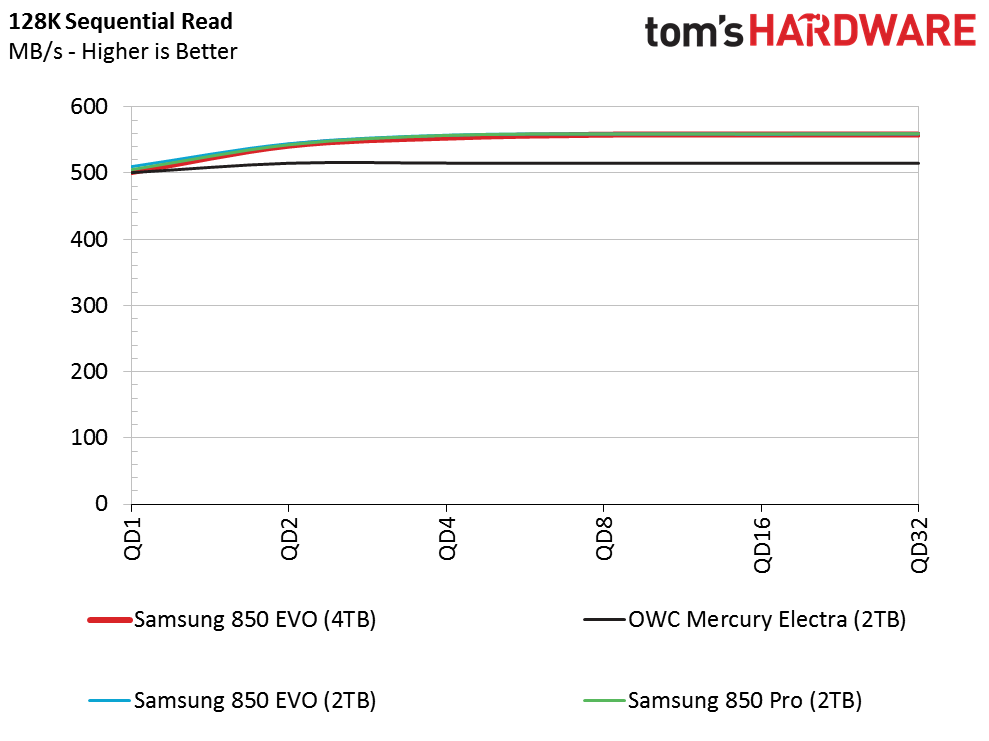
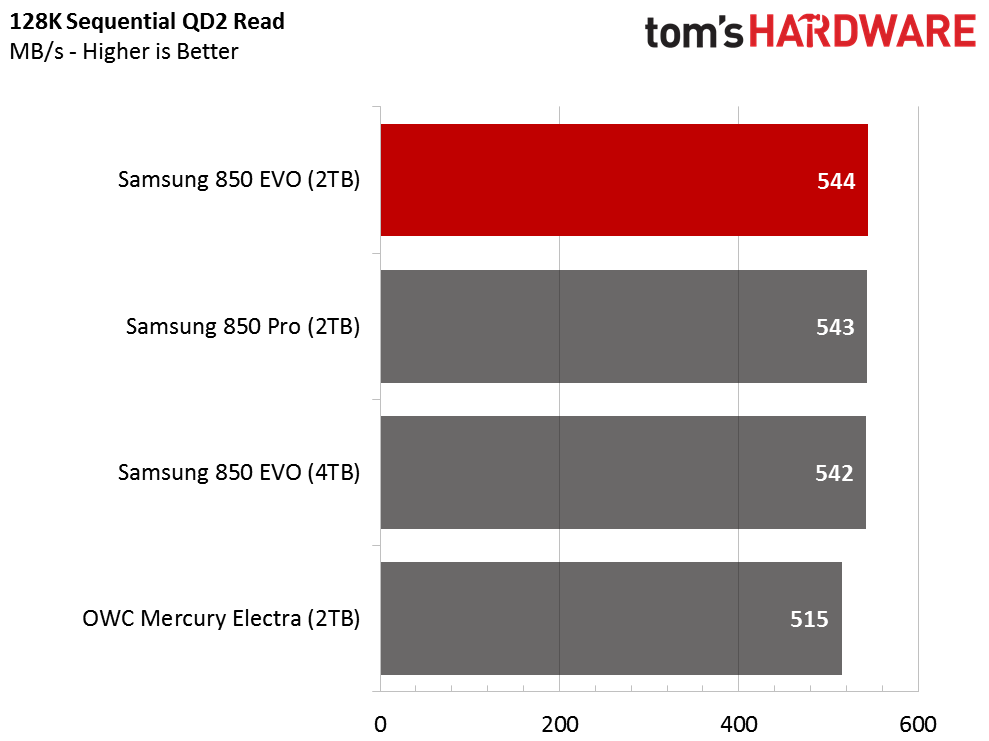
You will not see a lot of variance in performance between the three Samsung products until later in this review. For the most part, the new 850 EVO delivers the same performance that we measure in the 2TB 850 Pro and EVO review. The OWC Mercury Electra 2TB falls well short of hitting the high bar set by the three Samsung 850 products.
Sequential Write Performance
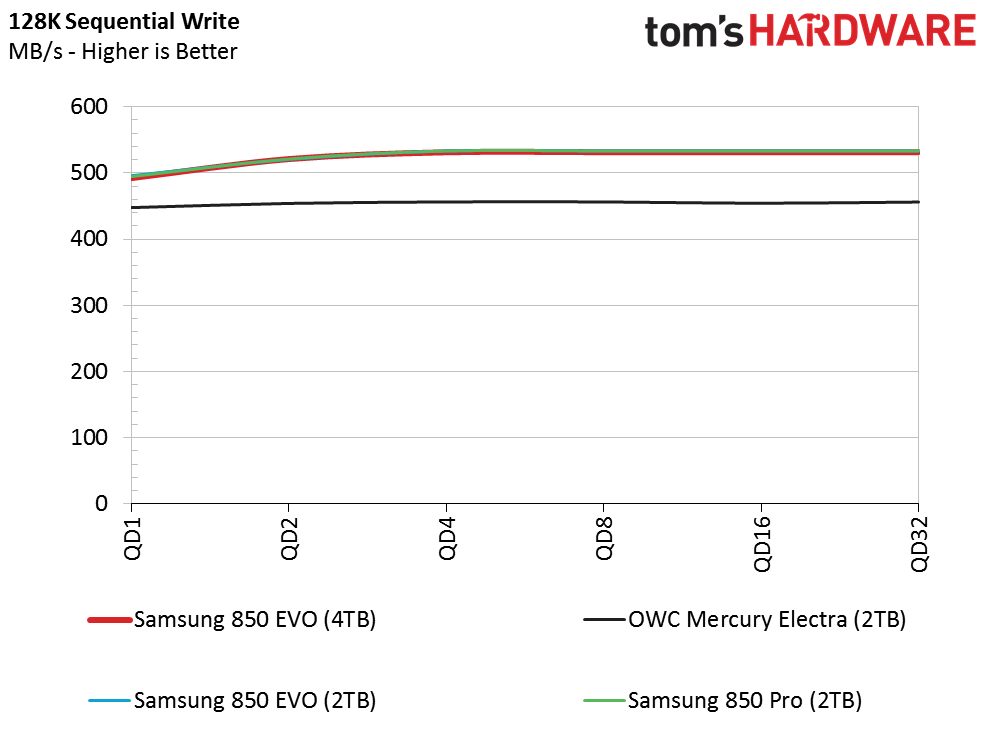

Products armed with three-bit per cell NAND flash usually have trouble with large sequential write tests. We often see large swings in performance that appear on the charts as waves, which is due to the data passing between the SLC and TLC areas. The Samsung 850 EVO 4TB is so large that you will write all data to the SLC area unless you run the drive nearly full. It would be very difficult to force a steady state condition under normal use with a large 96GB SLC spare area.
Random Read Performance
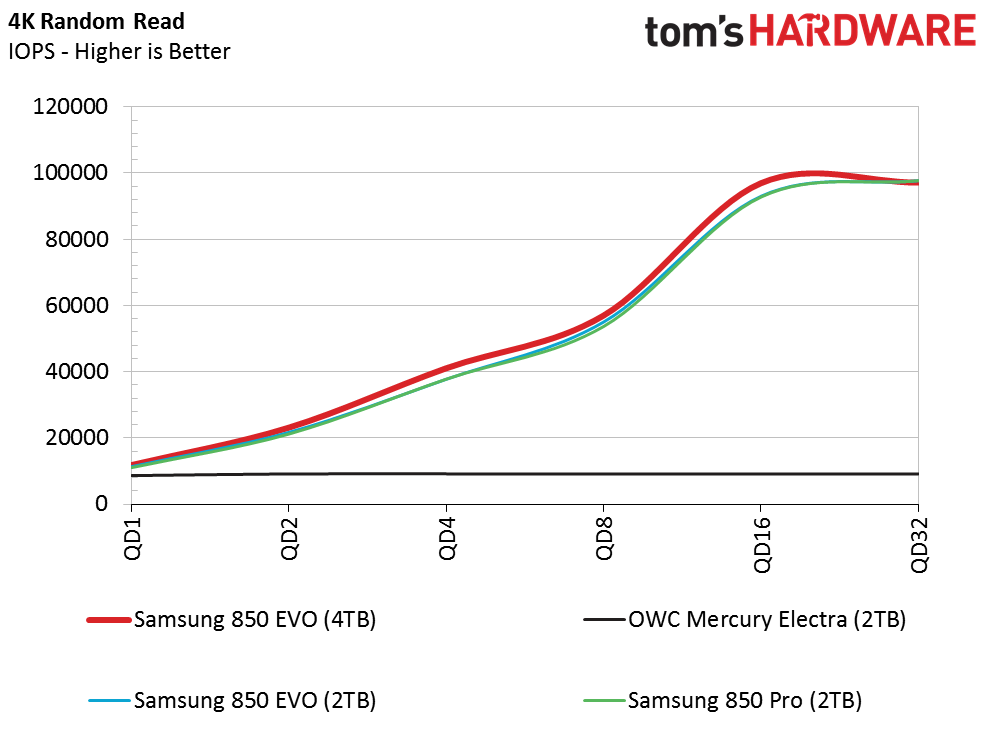
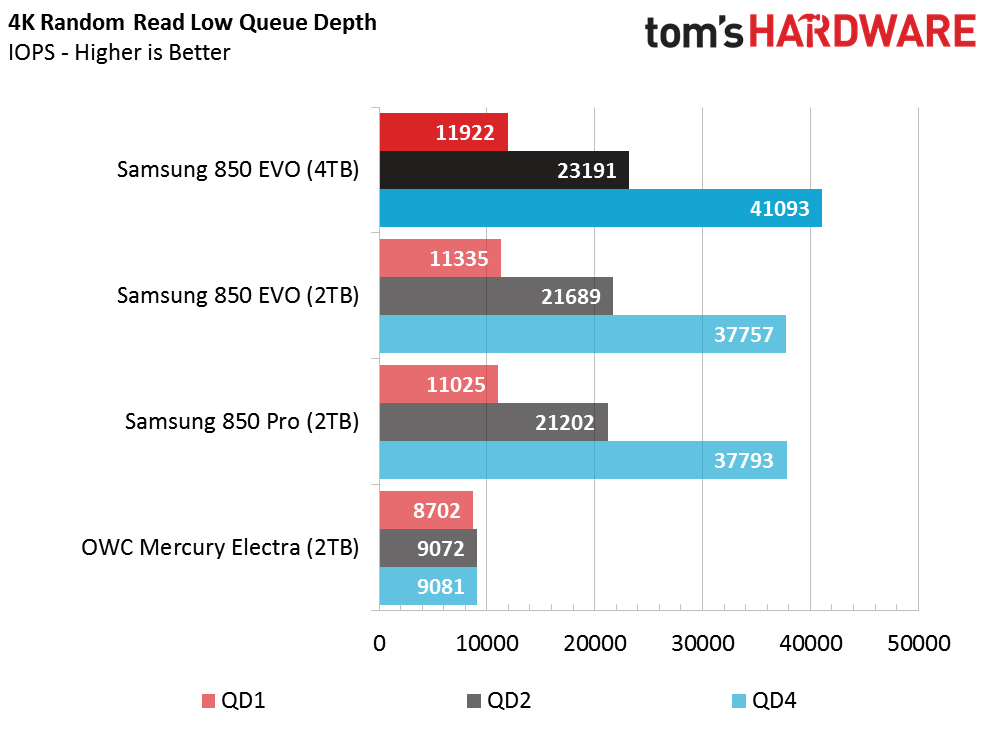
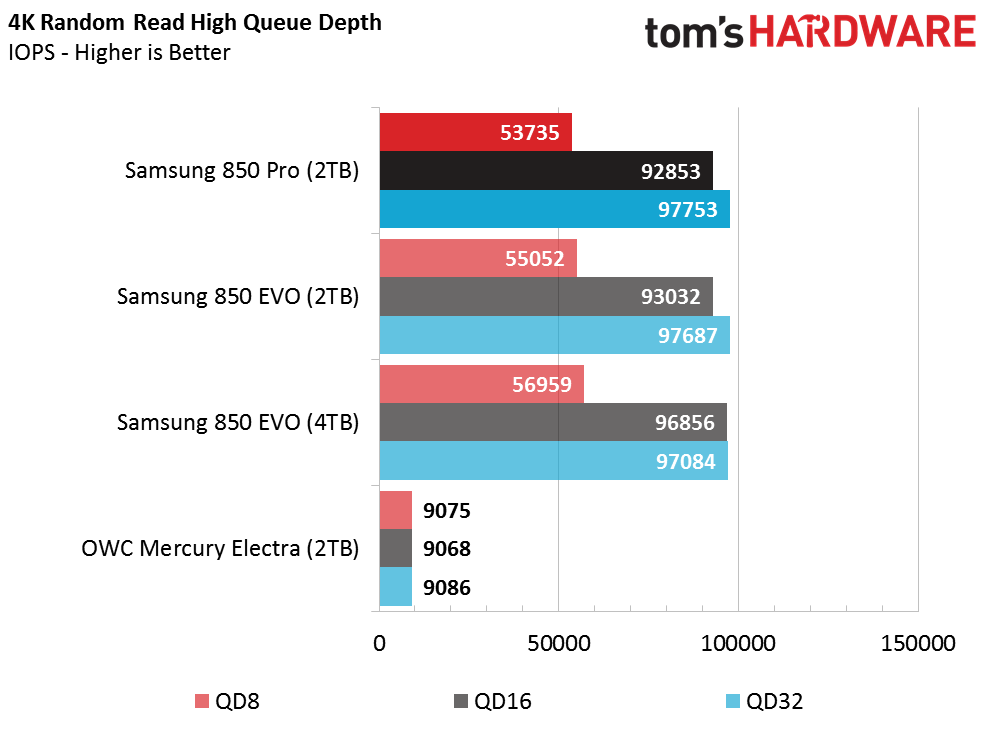
The Samsung 850 EVO 4TB sets the bar very high for random read performance at low queue depths. Samsung lists a very generic 10,000 IOPS rating for the latest EVO SSD, but there is more to the story. The 850 Evo delivers the highest queue depth 1 random performance of any SATA SSD we've ever tested; the SSD nearly surpassed 12,000 IOPS. To put this into perspective, the new Samsung SM961 NVMe PCIe SSD only reaches 15,000 IOPS. With this much random read performance, the new 850 EVO 4TB may overtake the SanDisk Extreme Pro as the fastest SATA SSD ever made.
Random Write Performance
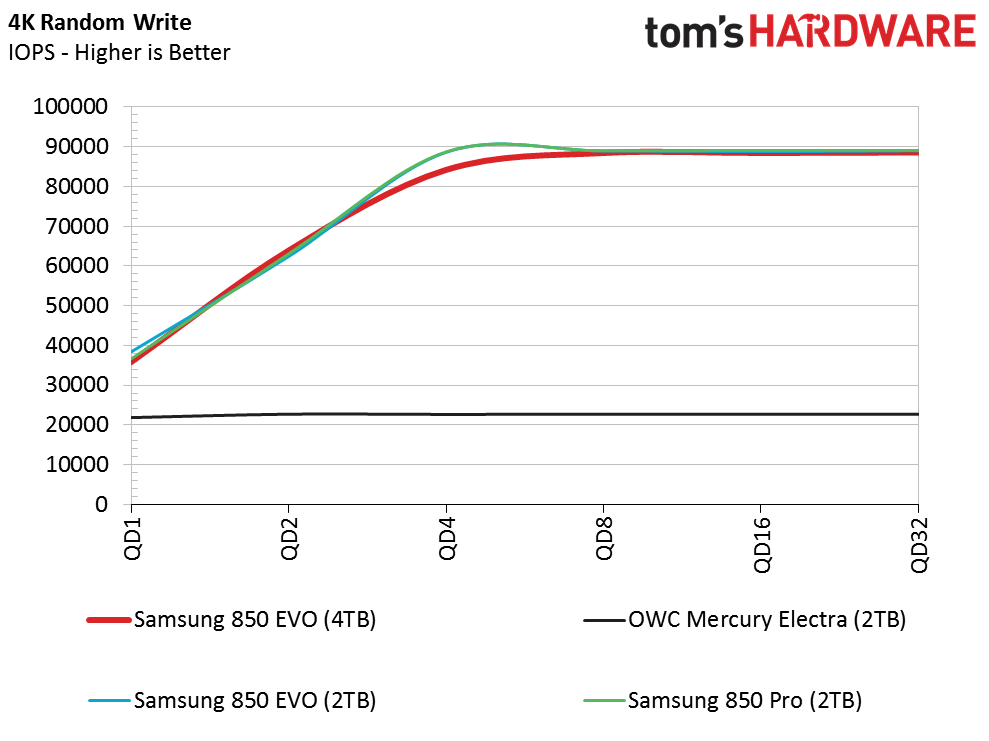

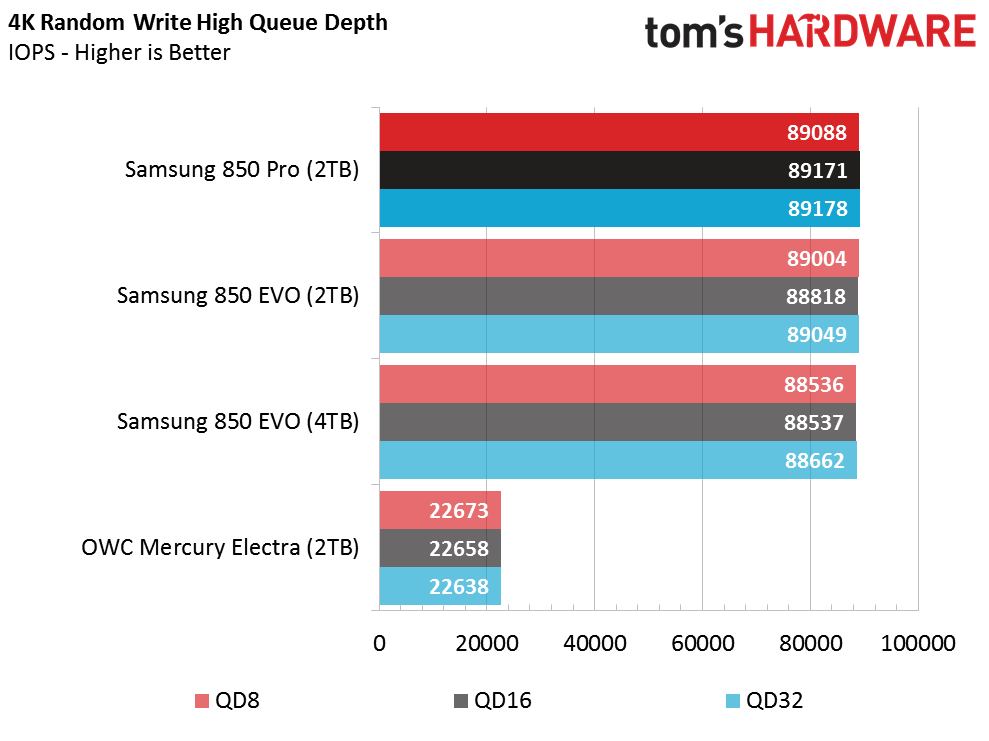
The three Samsung 850 products deliver nearly identical random write performance results, too. At this point, you may wonder what is so "Pro" about the 850 Pro. It appears that Samsung asked the same question and decided to either wait or cancel the update for the 850 Pro series at this time.
What we see is the SLC mode buffer absorbing all of the random writes and then rolling the data to the TLC area. We've talked about this in the past but should mention it again. Samsung's 3D TLC flash is much faster than 2D MLC from SK Hynix, Toshiba, SanDisk, Intel and Micron, so it is better to compare Samsung's TLC to MLC NAND from every other company. Even Micron's new 3D TLC with 384bit die is slower than Samsung's 3D TLC flash.
Get Tom's Hardware's best news and in-depth reviews, straight to your inbox.
Current page: Four-Corner Performance Testing
Prev Page Specifications, Pricing, Warranty And Accessories Next Page Mixed Workloads, Steady State And Software Performance
Chris Ramseyer was a senior contributing editor for Tom's Hardware. He tested and reviewed consumer storage.
-
lucas_7_94 And i'm here with the 250GB...Reply
In term's on technology, this is amazing, small, fast, good storage, hope the prices will be a little cheap!! -
Faisal_Almalki223 Great technological evolution for SSDs! In a really short time too...Reply
But the only culprit is the price, but overtime it might drop down to a logical price that appeals to us end users. -
logainofhades At that price, they can keep it. I will just sit here with my 480gb Sandisk Ultra II and Toshiba 4tb HDD, for now.Reply -
teamninja For regular people a 250 gb SSD will work perfectly well and a HDD for storing photos and videos will do fine.... considering a 4 TB HDD cost 1/10th of this...Reply -
phantomferrari Personally if I had the money to spend I would wait. Since the SM961 was released based on a new controller and now micron/intel and others are starting to push out 3d nand products id wait until the 860 series (which should be out by the end of the year) a new controller and more competition (which samsung really doesnt have now when it comes to 3d nand) should make for cheaper drives :)Reply -
Metteec Nice review. Glad the low TBW was pointed out. Samsung would sell a few more if they increased it to 1,200TB, the same ratio TBW to size as their smaller 850 EVO drives. The future is grand for SSD storage; would not want to be a disk-based storage company right now.Reply -
Walter_IT "This jump isn't a shot across the bow to hard disk drive manufacturers; it's a boot on the throat".Reply
I disagree.
In fact, I am having a hard time thinking which kind of consumer could make use of such SSD, at these prices.
I just so happened to be looking for a 4-bay NAS for home storage, and for ~$1600 I can get 24TB in Raid5 configuration. All inclusive, and with a fairly decent NAS (Qnap TS451).
A 6TB consumer HDD sells for $160. So we're talking about nearly 10X lower cost for 50% more capacity. Yes, of course, the HDD is massively slower, but HDD are still way faster than anyone needs, for streaming videos. Which if you need 4~6TB, and you are a consumer, it is probably what you need the disk for.
So the advantages of this drives boil down to:
a) Single disk setup
b) Large storage on a laptop
Point a) is “convenient”, at best, but would anyone pay ~$1200 for such convenience? (With $300 you can get a 500GB SSD + 6TB HDD).
Point b) may make a difference … however, seeing how the few laptops that ship with SSD have options for 128GB or 256GB, the 4GB is really wishful thinking. And, again, this carries more than $1K premium. Not for everyone, that’s for sure.
IMHO, this is great technological advance, that goes in the right direction, but I see no practical use, and very little market, for it. Again, IMHO. -
CRamseyer The statement was made looking at the long term. Samsung could sell this drive today for $700 if it wanted. It uses the same controller and die arrangement as the 2TB drive. The additional 2GB of DRAM is a rounding error for most.Reply
Think of it as a proof of concept for many people right now at a $1500 price point. What happens when Samsung moves to 60-layer TLC flash with 384Gbit density (estimated)? The $700 moves down to $400.
If you don't think HDD companies are scared of flash then why are they buying IP and assets as fast as possible?

